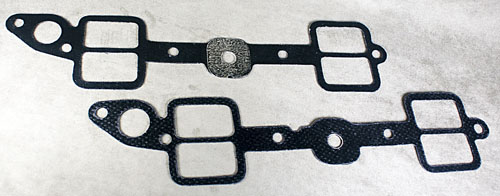- Reaction score
- 14
- Thunderbird Year
- 1957
I have some problems with carbon buildup inside the choke housing on my Holley 4 barrel carburetor. I replaced the carburetor two years ago with a rebuilt original. At the time I did not realize I was having this carbon buildup issue. Right now my current choke pull off piston is frozen in its bore due to the carbon buildup (in full open position). I pulled my old carburetor choke housing apart to see what that one looked like and that piston is completely frozen as well with no solvents, cleaners, or oils doing anything to release it. My current carburetor choke piston was free in the fall, but not now. I'm guessing that I must be burning some oil (not visible when driving) which must be the source of the carbon. Are there any suggestions on what I can do about loosening up the frozen piston and preventing future problems like this? Is retrofitting the Holley with an electric choke an answer? Thanks, Vern
This page contains affiliate links for which I may be compensated. As an eBay Partner, and Amazon Associate I may be compensated if you make a purchase at no cost to you.






